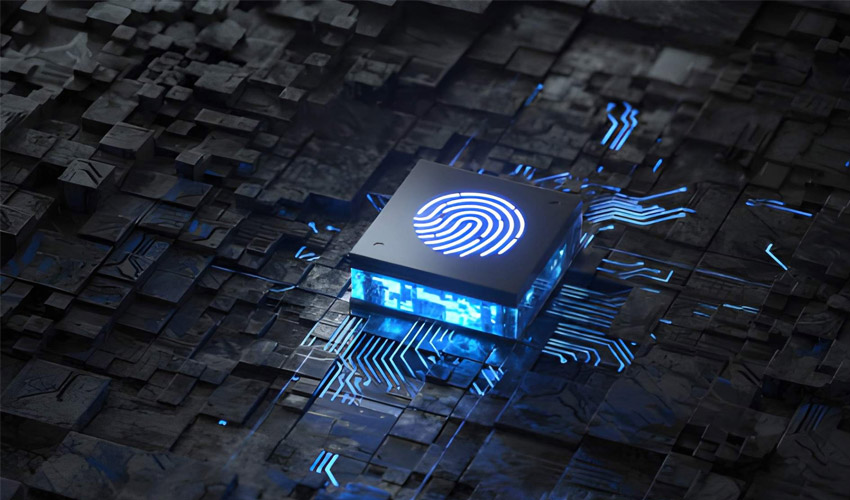Your password is probably terrible. I’m not trying to offend you—it’s just statistics. According to recent research from Freemindtronic (2025), the average person manages between 70 and 80 passwords across various accounts, with over 423 billion passwords in use worldwide. And despite decades of security warnings, “123456” and “password” still rank among the most common choices people make.
But here’s the thing: the future of password security isn’t about creating better passwords. It’s about eliminating them entirely.
We’re standing at a pivotal moment in digital security history. The technologies emerging today—from passkeys to biometric authentication and quantum-resistant cryptography—are fundamentally reshaping how we protect our digital lives. Let’s explore what’s actually happening and what it means for you.
The Password Problem Isn’t Getting Better—It’s Getting Worse
Before we talk about solutions, let’s acknowledge the problem. According to TeamPassword’s 2025 analysis, passwords are implicated in 85% of hacking-related breaches. That’s not a typo—85%. An alarming 52% of Americans reported having their password stolen in the past year alone.
The statistics get even more concerning when you dig deeper:
- Nearly 60% of Americans use passwords with eight characters or fewer, with one-third using seven characters or less (TeamPassword, 2025)
- 75% of people don’t follow expert password advice, according to a Keeper Security global study (2024)
- 36% of respondents had at least one account compromised due to weak or stolen passwords (FIDO Alliance, 2025)
- 48% of consumers abandon online purchases simply because they forgot their password (FIDO Alliance, 2025)
Perhaps most troubling? Analysis of Fortune 500 companies revealed that 20% of employee passwords were simply the company name or a slight variation. Even in high-stakes environments, password fatigue leads to dangerous shortcuts.
Enter Passkeys: The Password Killer
The most significant shift happening right now is the rise of passkeys—a technology that major tech companies believe will finally kill the password for good.
According to the FIDO Alliance, more than 1 billion people have activated at least one passkey as of 2025. That’s a staggering number for a technology that was barely on anyone’s radar two years ago. Consumer awareness jumped from 39% in 2022 to 57% in 2025.
What Makes Passkeys Different?
Unlike passwords, passkeys use public-key cryptography. When you register with a service, your device creates a unique public-private key pair. The private key never leaves your device and is protected by biometrics or a PIN. The service only stores the public key, which is useless to hackers without the private key.
This architecture makes passkeys inherently phishing-resistant. Even if you’re tricked into visiting a fake website, there’s no password to steal.
The Numbers Behind Passkey Adoption
The momentum is undeniable:
- Passkey authentications have more than doubled in a year, reaching 1.3 million per month (Dashlane, 2025)
- 40% of users now store at least one passkey (Dashlane, 2025)
- 48% of the top 100 websites offer passkeys as a login method—more than double the number from 2022 (FIDO Alliance, 2025)
- 93% of user accounts across major service providers are now eligible for passkey sign-ins, with 36% already enrolled (Liminal’s Passkey Index, 2025)
Microsoft made waves in May 2025 by making passkeys the default sign-in for all new accounts, driving a 120% increase in authentications. Amazon alone now represents 39.9% of all passkey traffic, followed by eBay, Lowe’s, Home Depot, and Target.
Business Benefits That Actually Matter
Here’s where things get interesting for organizations. Passkey sign-ins average just 8.5 seconds—73% faster than traditional methods like email verification or SMS codes, which take over 30 seconds (Liminal, 2025). They also boast a 93% success rate compared to 63% for legacy approaches.
For businesses, the financial case is compelling. Companies reported an 81% reduction in login-related help desk incidents after implementing passkeys. When you consider that password resets cost enterprises between $70-$200 per incident, the savings add up quickly.
Biometric Authentication: Your Body as Your Password
Closely tied to the passkey revolution is the rise of biometric authentication. A Bitwarden study found that biometric authentication is now the most popular form of passwordless technology among consumers.
The reason is simple: convenience meets security. Face recognition, fingerprint scanning, and iris detection are nearly impossible to replicate or steal. You can’t lose them, forget them, or have them phished away in an email scam.
As of 2025, over 95% of all iOS and Android devices are passkey-ready, with over 90% having passkey functionality enabled. This ubiquity means biometric authentication is no longer a premium feature—it’s becoming the standard.
The Dark Side: AI-Powered Attacks and Quantum Threats
While we’re building better defenses, attackers aren’t standing still. Two emerging threats loom particularly large: artificial intelligence and quantum computing.
AI: The Double-Edged Sword
According to Freemindtronic’s 2025 report, 47% of organizations cite GenAI-powered adversarial advancements as their primary concern. AI-driven password cracking has become exponentially more effective, with models trained on leaked credentials cracking over 70% of eight-character passwords in minutes (RSI Security, 2025).
Generative AI enables attackers to create sophisticated phishing emails at scale—tens of thousands of tailored messages in seconds. Unit 42’s Global Incident Response Report (2025) found that tasks that traditionally took adversaries a week can now be completed in just minutes with AI assistance.
In 2024, 42% of organizations reported phishing or social engineering incidents, many enhanced by AI capabilities. Deep learning applied to side-channel attacks has successfully extracted cryptographic keys with a 94% success rate in controlled environments (Google and ETH Zurich, 2023).
Quantum Computing: The Coming Storm
While practical quantum computers capable of breaking current encryption aren’t here yet, the threat is real enough that organizations need to prepare now.
The concern centers around “Harvest Now, Decrypt Later” attacks. Threat actors are already stockpiling encrypted data today, planning to decrypt it when quantum capabilities mature. According to KPMG (2025), 73% of US organizations believe it’s only a matter of time before cybercriminals use quantum computing to decrypt current cybersecurity protocols.
Quantum algorithms like Shor’s algorithm can break RSA and Elliptic Curve cryptography—the foundation of most modern encryption. When practical quantum computers arrive (estimates range from 5-15 years), our current encryption will become obsolete almost overnight.
The good news? Post-quantum cryptography (PQC) is already in development. The National Institute of Standards and Technology (NIST) has standardized quantum-resistant algorithms, and major companies are already deploying them. Apple’s iMessage now uses the PQ3 protocol to defend against quantum threats, and Google is testing PQC in Chrome.
Multi-Factor Authentication: Still Essential, But Evolving
While we work toward a passwordless future, multi-factor authentication (MFA) remains a critical defense layer.
The adoption numbers are encouraging. According to a 2024 Bitwarden survey, 2FA adoption worldwide reached 78% for personal accounts and 73% for work accounts—a significant increase from 37% of US users in 2019 (Spacelift, 2025).
Microsoft estimates that enabling MFA can deter 96% of bulk phishing attempts and 76% of targeted attacks aimed at compromising accounts. However, 23% of US employees still don’t use any form of 2FA at work.
The challenge? Traditional MFA methods have their own vulnerabilities. SMS-based codes are susceptible to SIM swapping, and email verification can be intercepted. This is driving adoption of more secure methods like hardware keys and authenticator apps.
Password Managers: The Transitional Technology
As we shift toward a passwordless future, password managers find themselves in an interesting position. The market is projected to surge from $2.40 billion in 2025 to $8.10 billion by 2030—a 27.54% CAGR (Mordor Intelligence, 2025).
This growth seems counterintuitive if passwords are dying. The reality is more nuanced. Password managers are evolving to manage passkeys alongside traditional passwords, serving as credential orchestration platforms during the long transition period.
Some interesting trends:
- Cloud-hosted solutions held 60% market share in 2024, with hybrid deployments growing at 28.4% CAGR (Mordor Intelligence, 2025)
- 60% more Americans adopted password managers between 2022 and 2023 (SMB Guide, 2024)
- Large enterprises account for 70% of the market, while SMEs are growing at 29.6% CAGR (Mordor Intelligence, 2025)
Password managers also solve a practical problem: most people will need to manage both passwords and passkeys for years as older systems slowly upgrade.
Enterprise Adoption: Leading the Charge
The enterprise sector is moving faster than consumers on passwordless authentication, driven by regulatory requirements, insurance mandates, and the high cost of breaches.
A FIDO Alliance enterprise survey (2025) found that 87% of US and UK organizations have either deployed or are deploying passkeys, with two-thirds considering it a high or critical priority.
The reported impacts are significant:
- 90% saw moderate to strong improvements in security
- 82% noted positive effects on user experience
- 77% observed a reduction in help desk calls
- 73% reported productivity improvements
Organizations are prioritizing passkey rollouts for users with access to sensitive data—39% for those with IP access, 39% for admin accounts, and 34% for executives.
The challenges? Implementation complexity (43%), cost concerns (33%), and shared workstation usage (31%) remain barriers for non-adopters. However, 90% of organizations emphasize that education and training are crucial for successful deployment.
Industry-Specific Trends
Different sectors are adopting passwordless authentication at different speeds, driven by their unique security needs and regulatory environments.
Financial Services and Cryptocurrency
The financial sector contributed 30% of password management market spend in 2024, driven by regulatory mandates and fraud risk. Cryptocurrency platforms like Coinbase, Binance, and Kraken are among the most aggressive passkey adopters.
Gemini made headlines in May 2025 by requiring all users to create a passkey before accessing accounts, producing a 269% rise in authentications. When billions in digital assets are at stake, security isn’t optional—it’s existential.
Healthcare: Playing Catch-Up
Healthcare is growing fastest at a 29.8% CAGR in password management adoption, reflecting rising electronic health record exposure. Providers face average breach costs of $9.77 million in 2025 (Mordor Intelligence, 2025), catalyzing board-level endorsement of credential governance.
Retail and E-Commerce
Retail drives most passkey traffic, with e-commerce platforms accounting for nearly half of all passkey authentications. The reason? Checkout friction directly impacts revenue. Every abandoned cart due to a forgotten password represents lost sales.
What Comes Next: The Roadmap to 2030
The passwordless authentication market is projected to reach $22 billion in 2025 and nearly $90 billion by 2035. A striking 61% of organizations aim to transition to passwordless methods in 2025, with 87% of IT leaders expressing strong desire for it (Freemindtronic, 2025).
Several key developments will shape the next five years:
Quantum-Safe Everything
The US Quantum Computing Cybersecurity Preparedness Act requires federal agencies to transition to post-quantum cryptography. The EU’s Cyber Resilience Act will enforce secure-by-design cryptographic standards by 2026. This regulatory push will accelerate corporate adoption.
Crypto-Agility
Organizations are moving toward crypto-agility—the ability to quickly switch cryptographic systems when vulnerabilities are discovered. This flexibility will be crucial as both quantum computers and AI-powered attacks evolve.
Zero Trust Architecture
The future isn’t just about better authentication—it’s about continuous verification. Zero Trust frameworks ensure that every user, device, and connection is authenticated continuously, limiting exposure even if encryption is broken or AI finds a flaw.
Standardization and Interoperability
Apple’s introduction of secure credential portability in iOS 26 (September 2025) marked a significant shift. Users can now move passkeys between Apple’s ecosystem and third-party providers, addressing a key pain point for both consumers and IT administrators.
Practical Steps You Can Take Today
While the technology evolves, here’s what you should do right now:
- Enable passkeys wherever available. Check your most important accounts—Google, Apple, Microsoft, PayPal—and activate passkey authentication. Among those familiar with passkeys, 38% enable them whenever possible (FIDO Alliance, 2025).
- Use a password manager for everything else. Identity theft impacts internet users three times more likely when they don’t use password managers (Security.org, 2023).
- Enable MFA everywhere. Even basic two-factor authentication dramatically reduces your breach risk. Microsoft’s data shows it can deter 96% of bulk phishing attempts.
- Stop reusing passwords. Analysis shows 94% of exposed passwords are reused or duplicated, creating massive credential stuffing vulnerabilities (Freemindtronic, 2025).
- Consider biometric options. If your device supports Face ID, fingerprint scanning, or Windows Hello, enable it. These methods are both more secure and more convenient than passwords.
The Bottom Line
We’re witnessing the beginning of the end for passwords. Not tomorrow, and not uniformly across all services—but the trajectory is clear. Passkeys, biometrics, and quantum-resistant cryptography represent the future of authentication.
The password’s 60-year reign is ending not because we finally learned to create better passwords, but because we’re building systems that don’t need them at all. For users, this means more convenience and better security. For businesses, it means reduced costs, improved conversions, and stronger protection against evolving threats.
The question isn’t whether passwords will disappear—it’s how quickly you’ll adopt the technologies replacing them. The data suggests that by 2030, many of us will look back at passwords the way we now look at floppy disks: relics of a bygone era that seemed indispensable until something better came along.
And that something better is already here.










